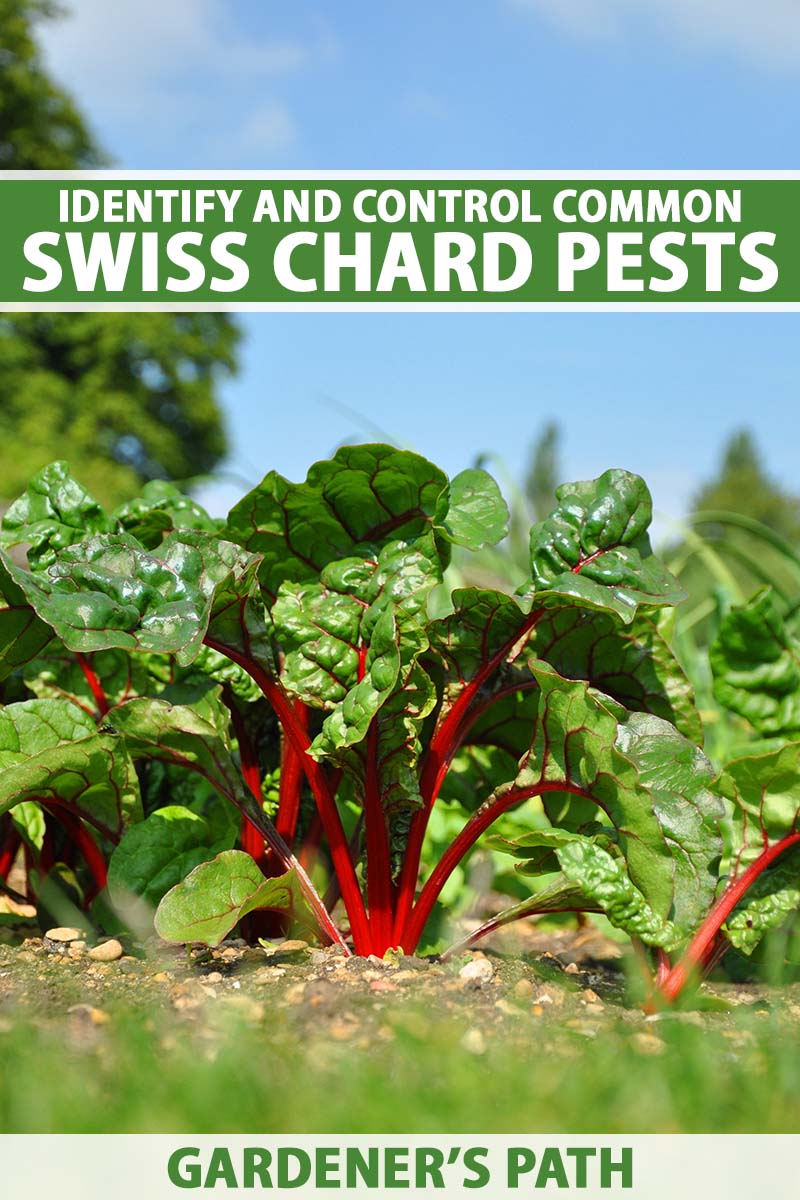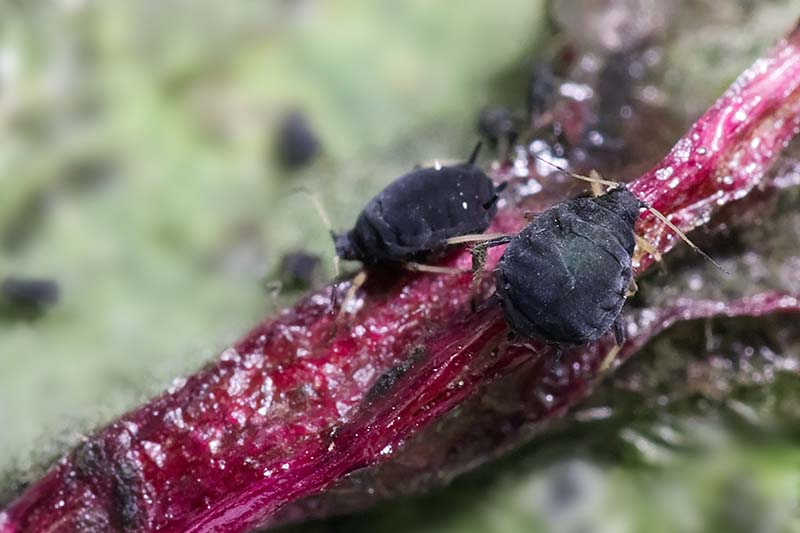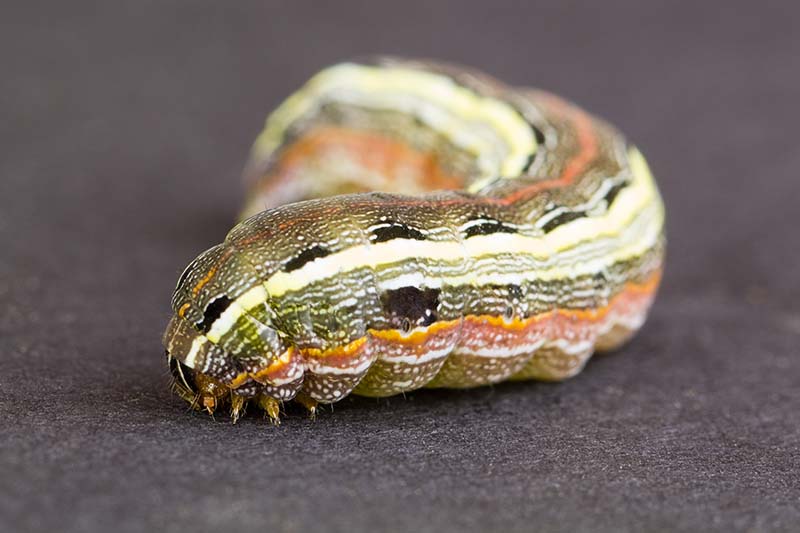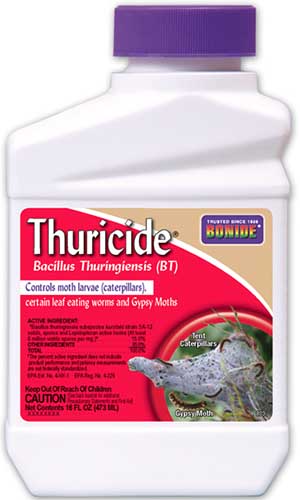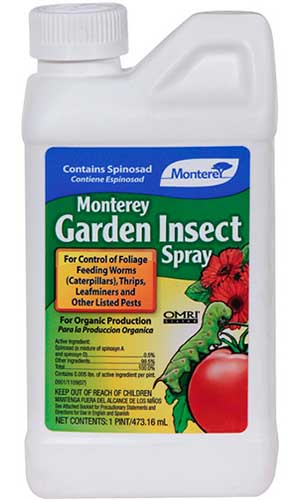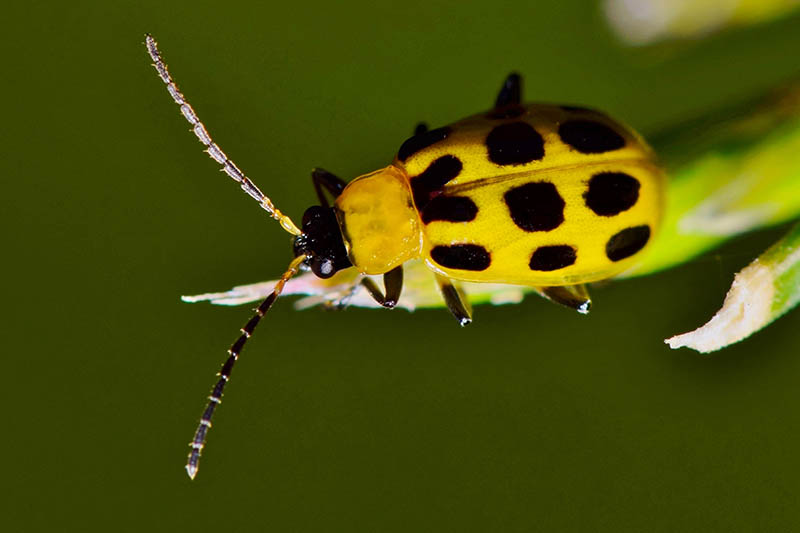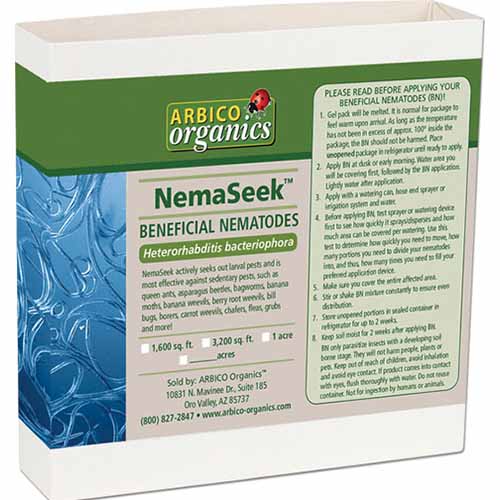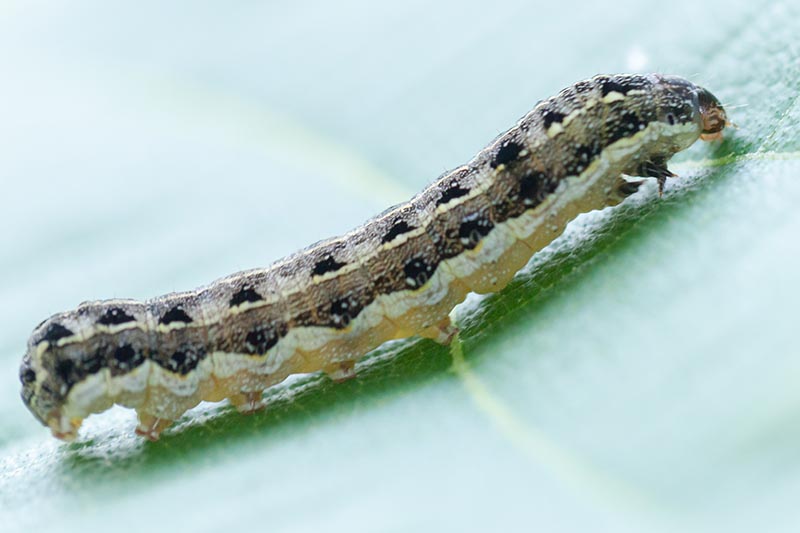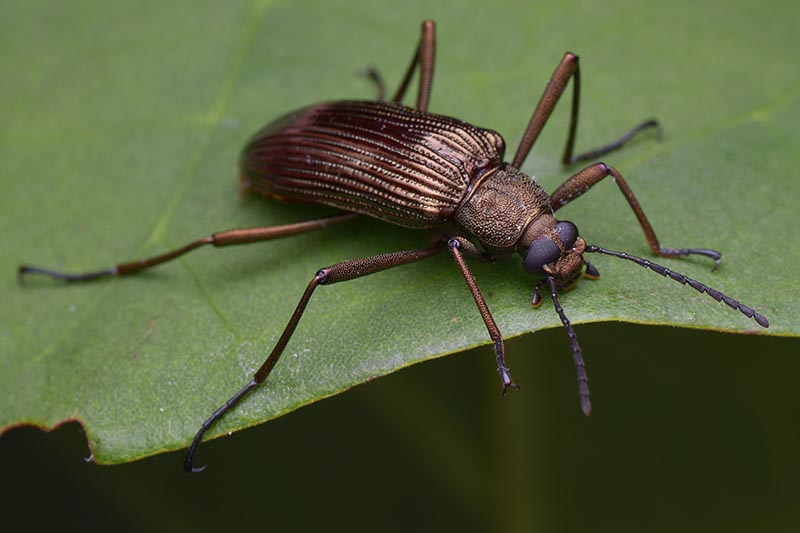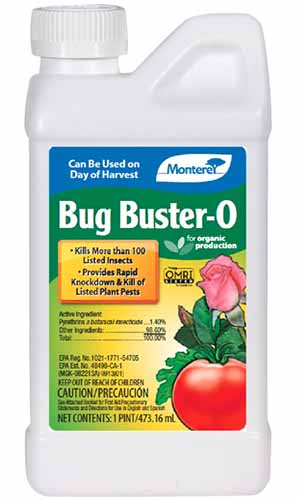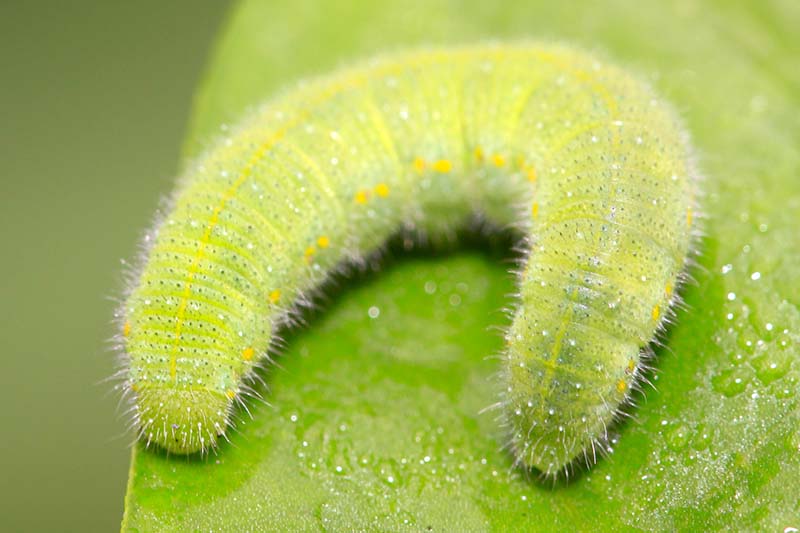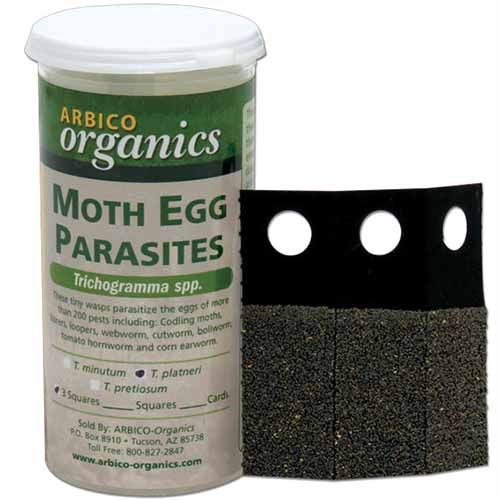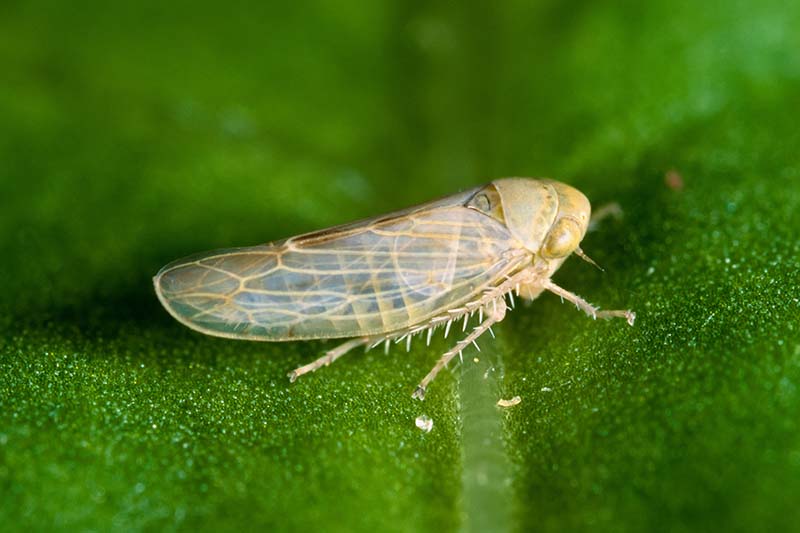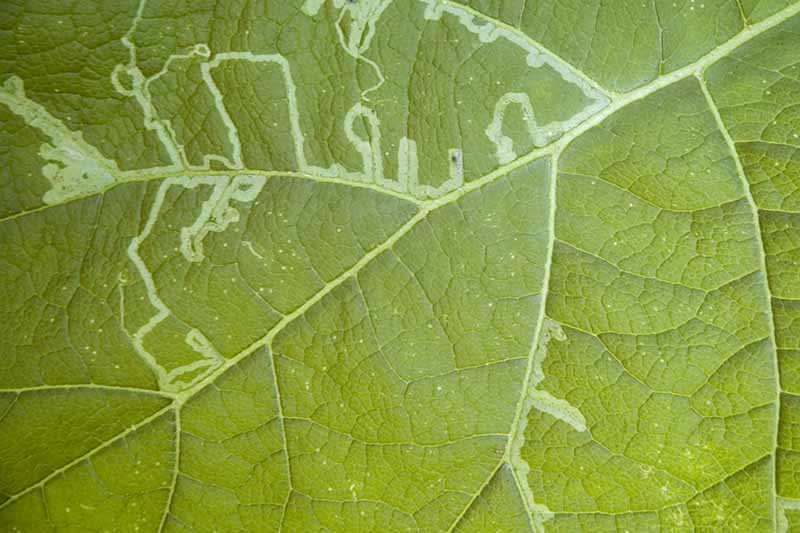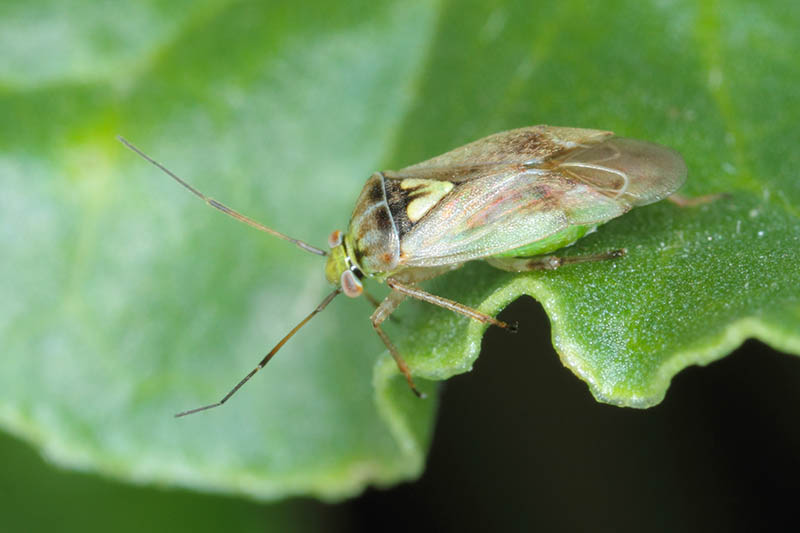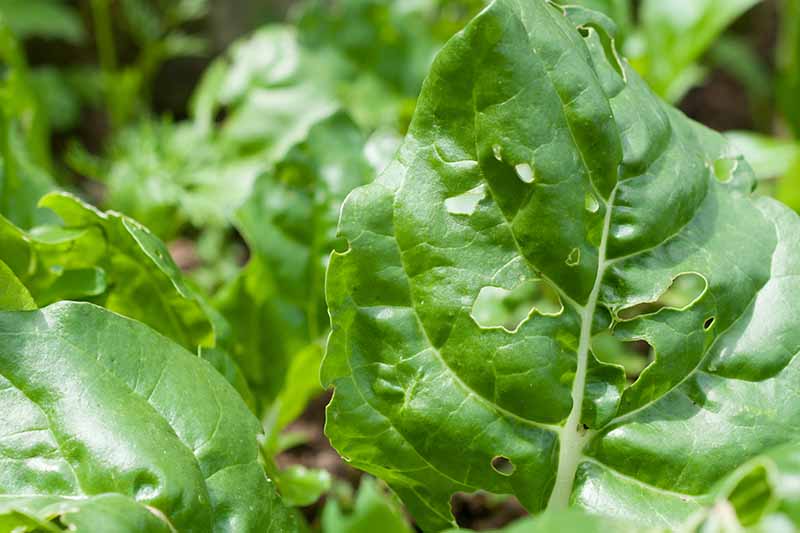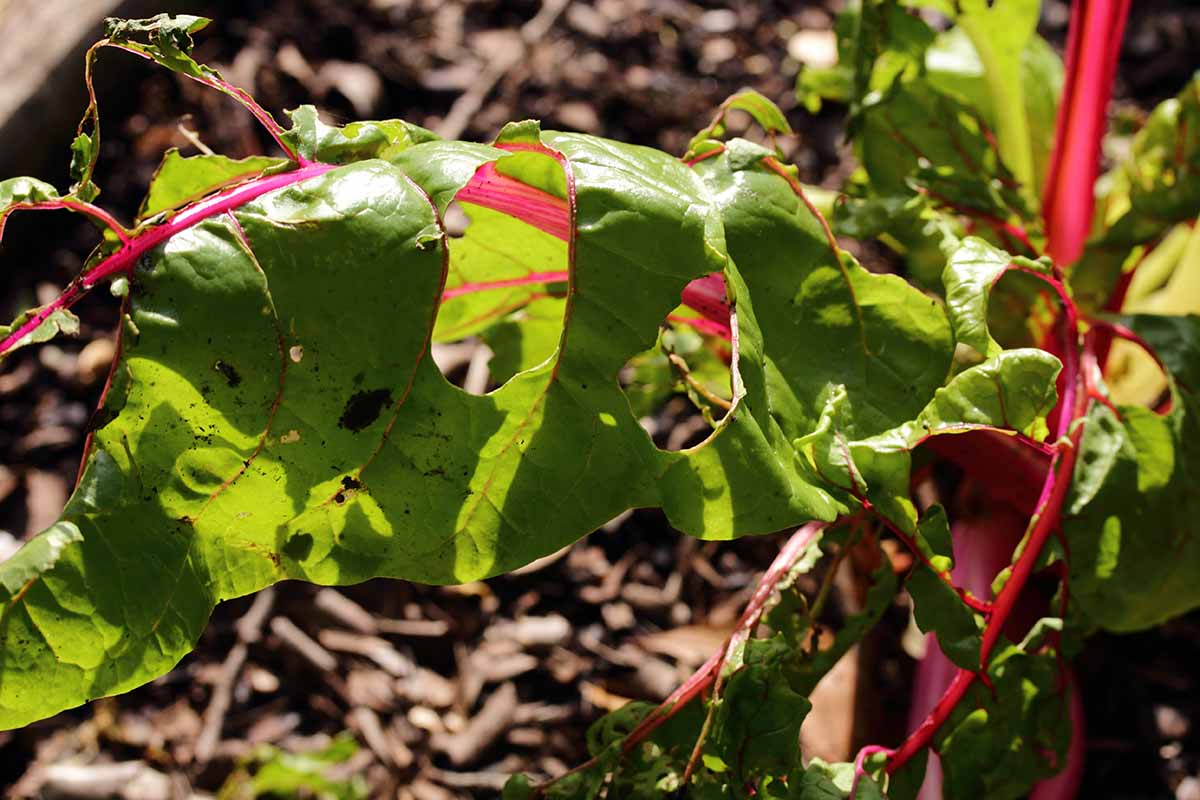When pests attack, you need to take swift action not only to avoid damage to that picture-perfect foliage, but to prevent an infestation from taking your plants out entirely. Now, before we jump in: you’re going to look at this list and think it’s awfully long. That must mean Swiss chard is constantly plagued by all manner of pests, right? Wrong! Even though there are many different types of insects as well as gastropods that will happily nibble on your chard, this colorful vegetable is rarely seriously troubled. We link to vendors to help you find relevant products. If you buy from one of our links, we may earn a commission. In this article, here are the pests we’ll discuss: Your best bet for getting rid of any of these unwelcome garden visitors is to address them as soon as you spot them. So let’s not wait one minute more to jump in!
1. Aphids
If you’ve never had trouble with aphids in your gardening career, don’t worry, you will have the opportunity at some point. Just about everything you could possibly grow in the veggie garden is apt to be attacked by one kind of aphid or another. Aphids are opportunists and there are about a dozen species that will suck on chard if given the chance. But bean aphids (Aphis fabae), which are dark olive in color, and green peach aphids (Myzus persicae), which are green or yellow, are the two species that most often seek out plants in the amaranth family, Amaranthaceae. These common sap-suckers aren’t really a big deal to discover in small numbers. Just spray them off your plant with a blast of water from the hose. In large numbers, they can reduce plant vigor, and even cause leaves to turn yellow and die. A major concern to consider is that they can spread disease. To learn how to prevent and address an infestation, check out our guide to dealing with aphids in the garden.
2. Armyworms
The name “armyworm” brings to mind a massive group of crawlers advancing on your garden like an invading army, and that’s not far off the mark. These insects emerge all at once and descend on your chard plants en masse, causing considerable damage. These chunky, inch-long worms are the larvae of numerous different night-flying moths in the family Noctuidae. There are four species that will commonly launch an attack on Swiss chard plants, including the beet armyworm (Spodoptera exigua), bertha armyworm (Mamestra configurata), fall armyworm (S. frugiperda), and the Western yellow-striped armyworm (S. praefica), though there are others as well, depending on where you are located. These caterpillars chomp their way through the foliage of the plant, leaving ragged holes behind or even skeletonizing the leaves. They all look a little different, so keep an eye out for worms moving along your leaves and pick them off when you see them. A product that contains Bacillus thuringiensis var. kurstaki (Btk), which is a beneficial bacteria, is effective against all kinds of caterpillars and worms.
3. Blister Beetles
Blister beetles aren’t super common in the home garden, but when they attack, they cause serious damage. They travel in large groups and can quickly defoliate a plant. Bonide Thurcide If you’re struggling with armyworms, head to Arbico Organics to grab a quart- or gallon-size ready-to-use container, or an eight- or 16-ounce concentrate. There are numerous species in the Meloidae family in different colors, including gray, brown, or black. And they can have yellow, red, or cream-colored stripes, or gray banding. They stand out from other beetles because of their long “necks” (aka pronotums). You can be sure that you have a blister beetle situation on your hands if you disturb the leaves and see the pests drop to the ground and scramble away. When eating, they start on the edges and move inward. To control them, row covers are your best bet, but hand-picking and regular applications of an insecticide that contains spinosad can usually reduce their numbers enough that you can wrestle the situation under control, if not eradicate them entirely.
4. Cabbageworms
The imported cabbageworm (Artogeia rapae) chomps irregular holes into the leaves of a number of different plants, including Swiss chard. Green with faint yellow stripes, they can grow up to an inch in length. Monterey Garden Insect Spray Spinosad is an organic option that is handy to keep around for dealing with many different types of insects. Pick some up in pint, quart, or gallon containers at Arbico Organics. The adults are extremely common white butterflies with black spots on their wings. The larvae hang out in the veins of the leaves, and you’ll often notice the dark fecal matter or frass that they leave behind. You may also see clusters of webbing, either empty, or with the small brown pupae or green worms inside. One of the nice things about Swiss chard is that, while the green worms hide well among the green foliage of other plants, they stand out against the bright neon stems of chard. Handpicking and drowning the larvae in soapy water is enough to manage a small infestation, but for additional control, use a product containing Bacillus thuringiensis var. kurstaki (Btk).
5. Cucumber Beetles
Despite their name, cucumber beetles feed on all kinds of different species of plants. There are two kinds of cucumber beetles that may attack Swiss chard: the spotted cucumber beetle (Diabrotica undecimpunctata) and the Western striped cucumber beetle (Acalymma trivittatum). Spotted cucumber beetles are kind of cute. They almost look like yellow ladybugs. And as you might guess, the striped cucumber beetle features black stripes on a yellow body instead of spots. Sadly, the damage they do to your crops is anything but cute. If you’re seeing a lot of damage, you’ll need to take a multi-pronged approach. Sticky traps can help capture some of the adults, and a treatment using beneficial nematodes can take care of both species of larvae.
6. Cutworms
Cutworms earned their name because they chew through the base of young veggies, severing them completely. That means all your hard work raising those chard seedlings goes right out the window and into the compost heap. NemaSeek Beneficial Nematodes Nemaseek is available from Arbico Organics in five-, ten-, 50-, 250-, and 500-million-count containers. You might also want to add in regular applications of a spinosad-based spray, because these tough beetles can be hard to eliminate. Learn more about how to use beneficial nematodes in our guide. These worms are closely related to armyworms, and they are also the larvae of night-flying moths in the Noctuidae family. We have a comprehensive guide to help you identify and eliminate these little bugs before they can mow their way through your entire crop.
7. Darkling Beetles
Also called rove beetles, darkling beetles in the Blapstinus, Eleodes, and Staphylinid genera are common across the US and throughout the rest of the world in home veggie gardens. Some species emit a foul-smelling liquid when threatened. Incidentally, have you ever fed a pet bird a mealworm, or found a worm in your flour? These are darkling beetles in their larval form, and they come from a huge family of beetles known as Tenebrionidae. These bugs feast on young seedlings, which they can devour in their entirety, but they can also eat the foliage of older plants, leaving ragged holes behind. They’re scavengers that will also eat rotting plant material on the garden floor, which is why it’s important to keep your garden beds clean. Don’t leave dead material on the ground. Unless your plants have a large infestation, you can ignore these pests. They might make your leaves look less attractive, but they will rarely kill a plant. Seedlings are most at risk.
8. Diamondback Moth Caterpillars
Diamondback moth larvae (Plutella xylostella) will attack all types of cole crops, like broccoli, cabbage, and kale. Monterey Bug Buster Monterey Bug Buster is an excellent option. It’s available from Arbico Organics in eight-ounce and 16-ounce containers. They primarily chew holes in the outer portion of leaves, and if you try to touch or catch one, it’ll drop from the plant with a silk strand to anchor it. They can vary in appearance, but the caterpillars are typically about a third of an inch long and cream, yellow, or green in color. The adult moths overwinter in debris in the garden, which is yet another reason that you should clean up your garden in the fall.
9. Flea Beetles
Flea beetles (Phyllotreta armoraciae, P. cruciferae, P. striolata, and Disonycha xanthomelas) just love cole crops. Trichogramma Moth Egg Parasites If you don’t have a healthy population of these parasitic wasps in your garden already, you can purchase them at Arbico Organics in various quantities. These tiny, black, sap-sucking hoppers jump from plant to plant, leaving little shot holes behind in areas where they’ve been feeding, so named because the damage they cause looks as though the plant has been shot with a teeny-tiny shotgun. These holes might go all the way through the leaf, or they might just extend only about halfway through. These holes can reduce the plant’s vigor or even kill a young plant if the infestation is large enough. Even worse, these insects spread disease. There can be multiple generations per year, and they emerge once temperatures reach 50°F or above. To learn how to identify, prevent, and treat flea beetles, read our comprehensive guide.
10. Leafhoppers
Beet leafhoppers (Circulifer tenellus) are disease-spreading menaces that chomp through your chard foliage. They spread beet curly top virus (BCTV), which is definitely a disease you don’t want your plants to contract. Look for the adults, which are pale green or yellow, have a wedge shape, and are about an eighth of an inch long. Or better yet, avoid an infestation altogether by putting up floating row covers in the early spring. Parasitic wasps, lacewings, and assassin bugs love nothing more than to gnaw on leafhoppers as well. Failing that, a pyrethrin spray can kill off both the adults and larvae.
11. Leaf Miners
You will rarely see leaf miners because they’re very small and they hang out inside the leaves, but the damage they leave behind is more obvious. There are two kinds that commonly attack Swiss chard, known as pea (Liriomyza huidobrensis) and vegetable (L. sativae) leaf miners. As these tiny larvae feed, they wind tunnels through the interior of the leaf. One day, you come outside to find that it looks like someone has been drawing little mazes on your veggies. Sometimes these trails expand as the tissue dies back. While the tunnels are unattractive (and may contain live larvae), the bigger problem is that they reduce photosynthesis and create openings for diseases to gain a foothold. Those parasitic wasps we just talked about a few pests ago? They are also extremely effective against leaf miners. Row covers can prevent the adult flies from landing and laying eggs too. But really, the easiest form of control is to snip away any infected leaves. If a leaf is only lightly infested, smash the trail between your fingers. This will kill off any larvae that are present. You might want to trim away the bit that you smooshed at harvest time, so you aren’t eating dead bugs – though it won’t hurt you if you do. If smooshing bugs doesn’t appeal to you, break out the pyrethrin spray. You will need to spray biweekly, starting first thing in the spring to kill the adults before they can lay eggs. Learn more about how to manage leaf miners in our guide.
12. Lygus Bugs
Lygus bugs (Lygus lineolaris), also known as tarnished plant bugs, cause the stems of your chard to turn black and the buds to die back. Terminal growth will be yellowed and distorted, and foliage might be crinkled. The adults are about a quarter of an inch long, with yellow and brown markings. The nymphs are about a millimeter long and light yellow in color. Not only do they damage your plants, but they can transmit diseases as well. You definitely don’t want them crawling around in your garden! But how do you deal with them? First, preventative measures like keeping weeds out of the garden and cleaning up any debris will help. They especially like dock, goldenrod, vetch, and wild mustard. Crop rotation and row covers are also key. Parasitic wasps are your best friend in this situation. Encourage native wasps if possible, or purchase and introduce wasps such as Peristenus digoneutis and P. relictus.
13. Slugs and Snails
Slugs and snails won’t usually kill your plants unless they turn up in large numbers, or if your plant is just a little seedling. Otherwise, they just carve ugly holes in the foliage. No doubt you’re familiar with these common garden foes, but if you need a few tips for dealing with them, we have an excellent guide. That said, you want to be able to take swift action if they do show up. Hopefully this guide helped you feel more confident in addressing any issue that heads your way. If so, we’d love it if you’d come back and let us know in the comments which pests you encountered and how you took them out. Ready to take your Swiss chard growing skills to the next level? We have a few more guides for you to read next:
How to Grow Swiss Chard in ContainersHow to Grow Swiss Chard for Fall Harvests9 of the Best Chard Varieties to Grow at Home
